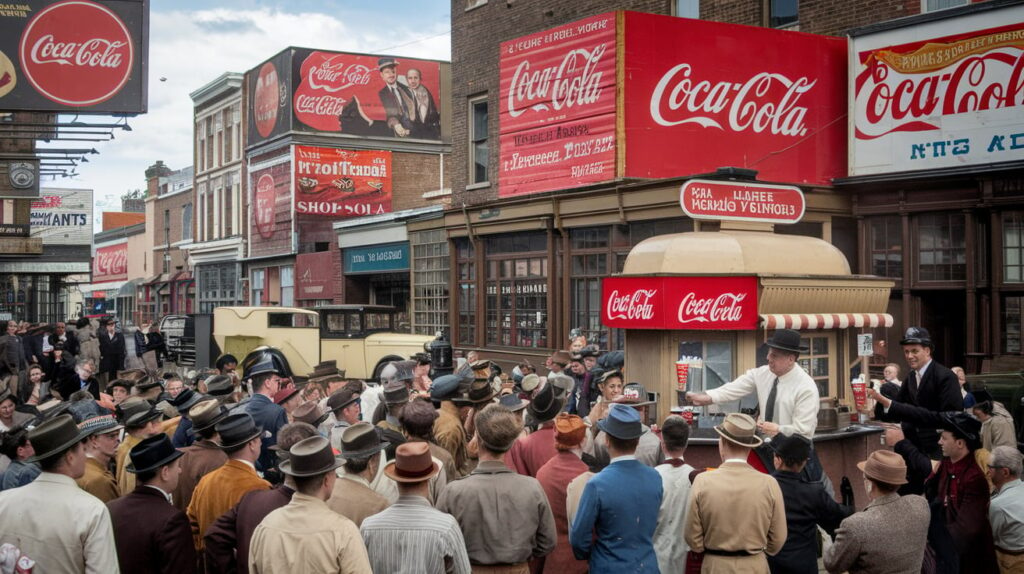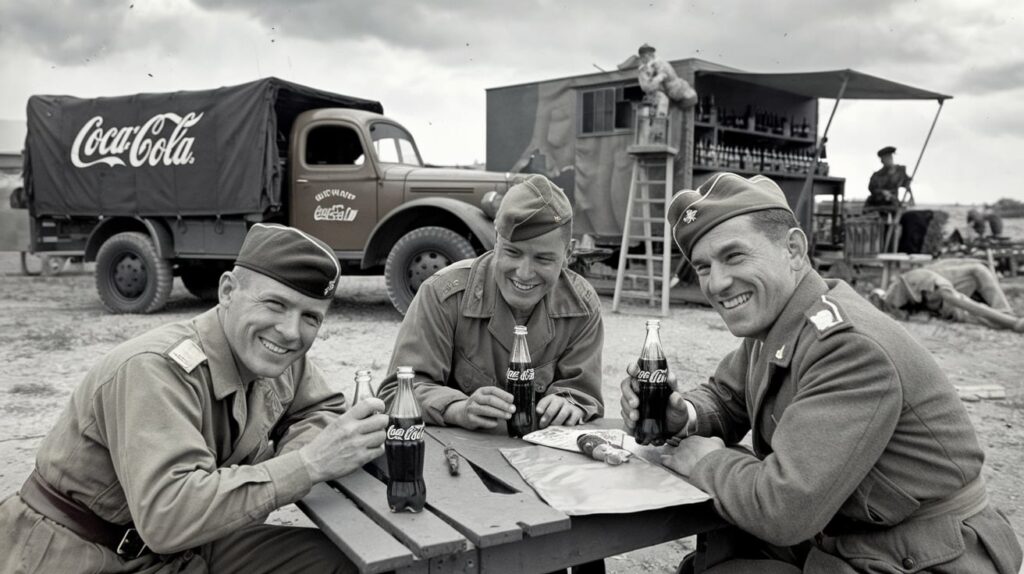Coca-Cola is not just a soft drink—it’s a cultural phenomenon, a symbol of global capitalism, and, for better or worse, one of the most recognized brands in the world. From its humble beginnings as a medicinal tonic in 1886 to becoming a multinational corporation selling over 1.9 billion servings a day, Coca-Cola’s history is rich, strange, and at times, controversial. In this article, we will dive into some fascinating aspects of Coca-Cola’s rise, uncover some of its most controversial moments, and even explore a few weird and wild facts about this world-famous beverage.
1. A Strange Beginning: Cocaine and Wine in a Bottle
Coca-Cola started off as anything but a refreshing soft drink. It was originally concocted by Dr. John Pemberton in Atlanta as a “miracle tonic” called French Wine Coca, a mix of Bordeaux wine, coca leaf extract (which contained cocaine), and caffeine.

Pemberton marketed it as a cure for headaches, impotence, and even morphine addiction. When Atlanta and several other states passed prohibition laws in 1886, Pemberton removed the alcohol and created the carbonated version we know today.
While Coca-Cola denies the product ever contained cocaine, it’s well documented that coca leaf extract was part of the original formula. The drink didn’t lose its cocaine entirely until the early 20th century. This strange medicinal start is why Coca-Cola was originally marketed as a brain tonic rather than a soft drink.
2. How Coca-Cola Became a Marketing Giant
In the early years, Coca-Cola was far from the household name it is today. Sales were slow, and Dr. Pemberton sold the business for just $2,300 before dying in 1888, never knowing the global empire his drink would become. But things began to change when Asa Candler took over.

A master marketer, Candler plastered the Coca-Cola name on every surface he could find: billboards, barns, pocket mirrors, and calendars. His most genius move? Coupons for free Coca-Cola, distributed to soda fountains around the country.
This relentless advertising worked wonders, and Coca-Cola exploded in popularity. By the early 20th century, Coca-Cola was no longer just a tonic for ailments—it had become a drink for everyone, sold at soda fountains across the U.S.
3. The Coca-Cola Formula: A Secret Hidden in Plain Sight?
One of the most intriguing aspects of Coca-Cola is the secret formula—or is it really that secret?

Coca-Cola goes to great lengths to promote the idea that its formula is stored in a high-security vault, but many speculate that it’s more of a marketing ploy than an actual mystery. Over the years, chemists and food scientists have deduced much of the drink’s composition. It turns out the real secret isn’t the formula but the brand loyalty Coca-Cola has built over time.
4. Coca-Cola’s Wartime Strategy: Marketing Genius in World War I
World War II was a pivotal moment for Coca-Cola’s expansion.

While sugar was being rationed, Coca-Cola managed to convince the U.S. government that the drink was an “essential wartime product” that helped boost soldiers’ morale. Coca-Cola even set up bottling plants overseas with help from the military, making it available to U.S. soldiers stationed around the world. By the end of the war, Coca-Cola had solidified its status as a symbol of American culture—and established a global footprint.
5. The Fanta Connection: A Nazi-Era Invention?
One of the strangest chapters in Coca-Cola’s history involves its German counterpart, Fanta. During World War II, Coca-Cola could no longer export its syrup to Nazi Germany, so Max Keith, head of Coca-Cola’s operations in Germany, came up with a substitute.

Using byproducts from the food industry (like apple fibers), Keith invented Fanta, which became incredibly popular in wartime Germany.
Interestingly, after the war, Coca-Cola reclaimed the Fanta formula and began selling it worldwide, but the brand’s origins remain one of the lesser-known—and controversial—parts of Coca-Cola’s story.
6. Coca-Cola’s Weirdest Uses: From Medicine to Rust Removal
Beyond its role as a beverage, Coca-Cola has an impressive (and bizarre) range of uses. It’s been touted as a remedy for insect bites, jellyfish stings, and even rust removal.

Its high acidity allows it to dissolve rust, clean toilets, and even remove grease stains from clothes. While it’s effective in these roles, it also raises the unsettling question: should something that can clean a car engine really be something you drink?
7. The New Coke Disaster: A Marketing Fail That Worked
No discussion of Coca-Cola is complete without mentioning the infamous New Coke fiasco. In 1985, Coca-Cola made the bold (and widely hated) decision to change its formula to compete with Pepsi. The public backlash was immediate, with angry fans bombarding the company with complaints. It was such a disaster that Coca-Cola reverted to the original formula within months.

However, the backlash had an unexpected silver lining: the reintroduction of “Coca-Cola Classic” led to an increase in sales. In one of the most bizarre twists of marketing history, a catastrophic failure ultimately strengthened the brand.
8. Coca-Cola’s Environmental and Social Controversies

Despite its massive popularity, Coca-Cola has faced numerous controversies over the years. Critics have accused the company of environmental damage, particularly in areas like India and Mexico, where Coca-Cola plants have been blamed for depleting local water supplies. The company has also faced legal battles over the use of pesticides in its drinks and its questionable labor practices, particularly in developing countries.
More Than Just a Soft Drink
Coca-Cola’s history is as fizzy as the drink itself—full of highs, lows, and a few odd twists. From its bizarre medicinal origins to its role in global conflicts and its controversial marketing campaigns, Coca-Cola has become much more than a beverage. It’s a reflection of consumer culture, capitalism, and the power of branding. Whether you love it or hate it, one thing is certain: Coca-Cola is here to stay.



